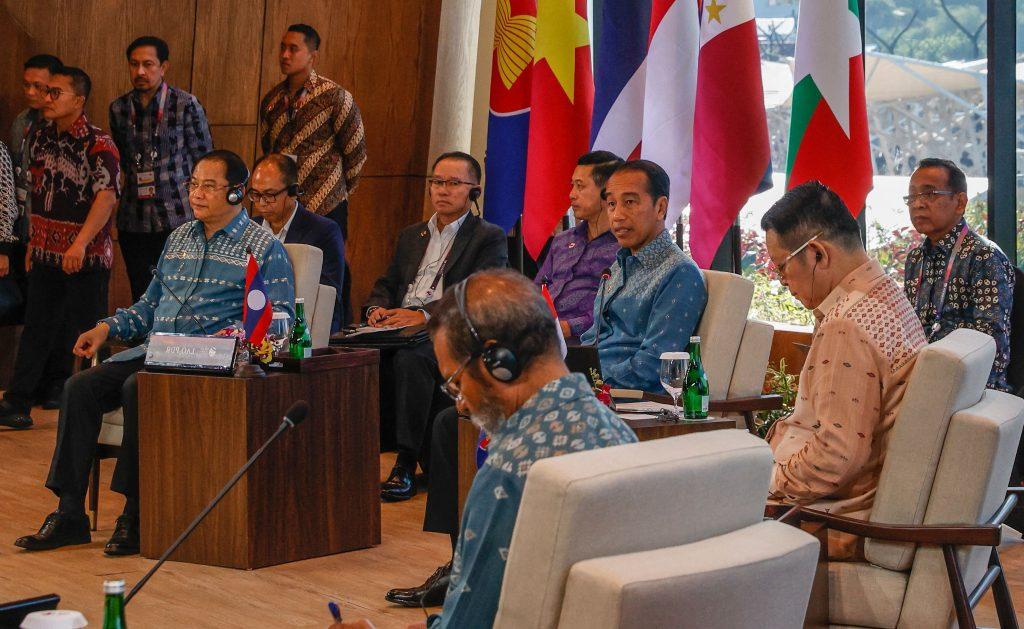What the invasion of Ukraine means for unity in Southeast Asia
Posted By Shakthi De Silva on May 15, 2023 @ 06:00

Lim Jock Hoi, ASEAN’s former secretary-general, has said [1] the organisation’s ability to function effectively relies on whether its members can align their national interests with regional goals. This can be difficult given its diversity, but ASEAN has made its unity a core objective since its inception.
The 1967 [2] Bangkok declaration—the organisation’s founding document—emphasised facilitating regional cooperation and strengthening bonds of regional solidarity. The 1976 [3] Treaty of Amity and Cooperation reiterated these sentiments.
It was in the aftermath of the 2012 Bali Concords II [4], however, that ASEAN set out a concrete vision to create a ‘cohesive, resilient and integrated ASEAN community’ and, crucially, a ‘common regional identity’.
This drive towards unity was accentuated through the ASEAN Community Vision of 2025 [5], which set a target of creating ‘one identity and one community’ that adheres to ‘shared values and norms’.
Even so, disunity persists.
In 2021, ASEAN issued a ‘five-point consensus [6]’ on the Myanmar crisis [7], yet violence there continues to escalate, generating criticism [8] of ASEAN’s slow response.
Disunity was key to the consensus’s failure to make a big impact. While Indonesia, Malaysia and Singapore were more openly [9] critical of the coup, member states nearer to Myanmar—Thailand, Vietnam, Cambodia and Laos—were reluctant to condemn the junta [10].
Other issues have similarly failed to engender regional consensus. The invasion of Ukraine is a notable example, with official ASEAN responses relatively muted.
On three occasions in 2022—26 February [11], 3 March [12] and 8 April [13]—ASEAN foreign ministers issued statements on the conflict. They referred the ‘hostilities’ taking place in Ukraine, and rather than call on Russia to withdraw from Ukrainian territory and follow international law, called for ‘an immediate ceasefire or armistice’ followed by ‘political dialogues that would lead to sustainable peace in Ukraine’.
Similar language came out of the ASEAN summit held lasts week. While Indonesia’s statement [14] as chair referred to ‘territorial integrity’ and ‘sovereignty’ and called for compliance with international law, it didn’t name Russia or refer to aggression in any way.
This disunity reflects diverging national interests. In a 2023 survey [15], only 14% of respondents from Laos said that they were ‘very concerned’ about Russia’s invasion of Ukraine, compared with more than 50% of respondents from Singapore.
Similarly, a 2020 report [16] asking the question, ‘Who would you consider as your country’s preferred strategic partner if the US was unreliable?’ found that 33% of respondents in Laos considered Russia a suitable partner while less than 1% felt the same way in Singapore. Failure to build consensus on these issues has affected the way each member state is framing the conflict and weakens efforts to protect unity in the region.
Between 2014 and February 2023, the UN General Assembly passed 11 resolutions on the Ukraine situation. The way ASEAN states voted demonstrates the absence of a united position on the issue.
Brunei and Vietnam, for example, have consistently abstained from resolutions. Indonesia, Malaysia and Thailand, from an initial point of more open condemnation of Russia’s actions, shifted to abstaining in subsequent resolutions.
Singapore, interestingly, is the only ASEAN country that has voted in favour of resolutions condemning Russia more than once. Even so, it hasn’t consistently voted that way.
The disunity is most on display in the voting patterns of Laos and Singapore. In stark contrast to Singapore’s position, Laos has abstained from or voted against every resolution on the Ukrainian crisis. And when Singapore has voted in favour of a resolution, Laos has voted against it all but once.
This divergence began with a resolution [17] adopted in December 2018 in response to Russia’s occupation of Crimea. Singapore voted in favour of three points that Laos voted against: paragraph 1, which stressed that Russia had violation of Ukraine’s sovereignty; paragraph 5, which identified Russia’s ‘unjustified used of force’; and paragraph 8, which referred to Russia as an ‘occupying power’ and urged it to end its ‘occupation of Ukraine’s territory’.
This set in motion a pattern of divergence that continues to the present day. Whenever UN resolutions characterise Russia’s actions as a violation of Ukrainian territorial integrity, or note that Russia’s actions are unjustified, or classify Russia as an occupying power that should withdraw from Ukrainian territory, Laos votes against while Singapore votes in favour.
This pattern shows a disregard by Laos of the gravity of Russia’s actions, and it also explains why ASEAN hasn’t been able to classify Russia as an ‘occupying power’ in violation of Ukraine’s territorial integrity, or even mention Russia by name in statements.
The fact that ASEAN members can’t agree on whether to say Russia violated international law in Ukraine throws doubt on the organisation’s repeated commitments to a ‘rules-based’ international order. It also raises serious questions about its ability to deal with contentious issues closer to home.
If ASEAN hopes to be at the centre of the region’s security and economic architecture, it must adopt a proactive role on regional issues that maintains unity and cohesion. If it can’t do that, it risks falling by the wayside in favour of more security-focused initiatives like the Quad [18] and AUKUS. In the absence of a strong, unified ASEAN, such agreements will fill the vacuum, and member states will be forced to improvise as outside powers exert a greater role in the security of Southeast Asia.
Article printed from The Strategist: https://aspistrategist.ru
URL to article: /what-the-invasion-of-ukraine-means-for-unity-in-southeast-asia/
URLs in this post:
[1] said: https://fulcrum.sg/aseanfocus/af-asean-55-adapting-to-global-disruptions/
[2] 1967: https://agreement.asean.org/media/download/20140117154159.pdf
[3] 1976: https://asean.org/wp-content/uploads/2021/01/20131230235433.pdf
[4] Bali Concords II: https://asean.org/speechandstatement/declaration-of-asean-concord-ii-bali-concord-ii/
[5] Community Vision of 2025: https://www.asean.org/wp-content/uploads/images/2015/November/aec-page/ASEAN-Community-Vision-2025.pdf
[6] five-point consensus: https://asialink.unimelb.edu.au/insights/asean-summit-on-myanmar-and-the-5-point-consensus
[7] Myanmar crisis: https://www.aljazeera.com/news/2022/8/3/why-is-the-myanmar-crisis-such-a-challenge-for-asean
[8] criticism: https://www.hrw.org/news/2022/04/22/myanmar-aseans-failed-5-point-consensus-year
[9] openly: https://www.straitstimes.com/asia/se-asia/indonesian-and-malaysian-leaders-voice-concerns-over-myanmar-military-coup-seek-asean
[10] junta: https://www.hrw.org/news/2023/03/29/myanmar-junta-dissolves-political-parties
[11] 26 February: https://asean.org/wp-content/uploads/2022/02/ASEAN-FM-Statement-on-Ukraine-Crisis-26-Feb-Final.pdf
[12] 3 March: https://asean.org/wp-content/uploads/2022/03/ASEAN-Foreign-Ministers-Statement-calling-for-Ceasefire-in-Ukraine-EN.pdf
[13] 8 April: https://asean.org/wp-content/uploads/2022/04/ASEAN_FM_Statement_on_killing_of_civilians_in_Ukraine_final_8_April.pdf
[14] statement: https://asean.org/chairmans-statement-of-the-42nd-asean-summit/
[15] 2023 survey: https://www.iseas.edu.sg/wp-content/uploads/2025/07/The-State-of-SEA-2023-Final-Digital-V4-09-Feb-2023.pdf
[16] 2020 report: https://www.iseas.edu.sg/wp-content/uploads/pdfs/TheStateofSEASurveyReport_2020.pdf
[17] resolution: https://documents-dds-ny.un.org/doc/UNDOC/LTD/N18/415/92/PDF/N1841592.pdf?OpenElement
[18] Quad: https://www.theguardian.com/world/2022/may/24/what-is-the-quad-and-how-did-it-come-about
Click here to print.